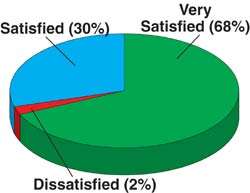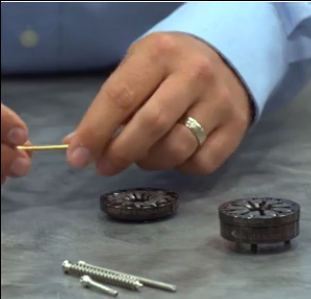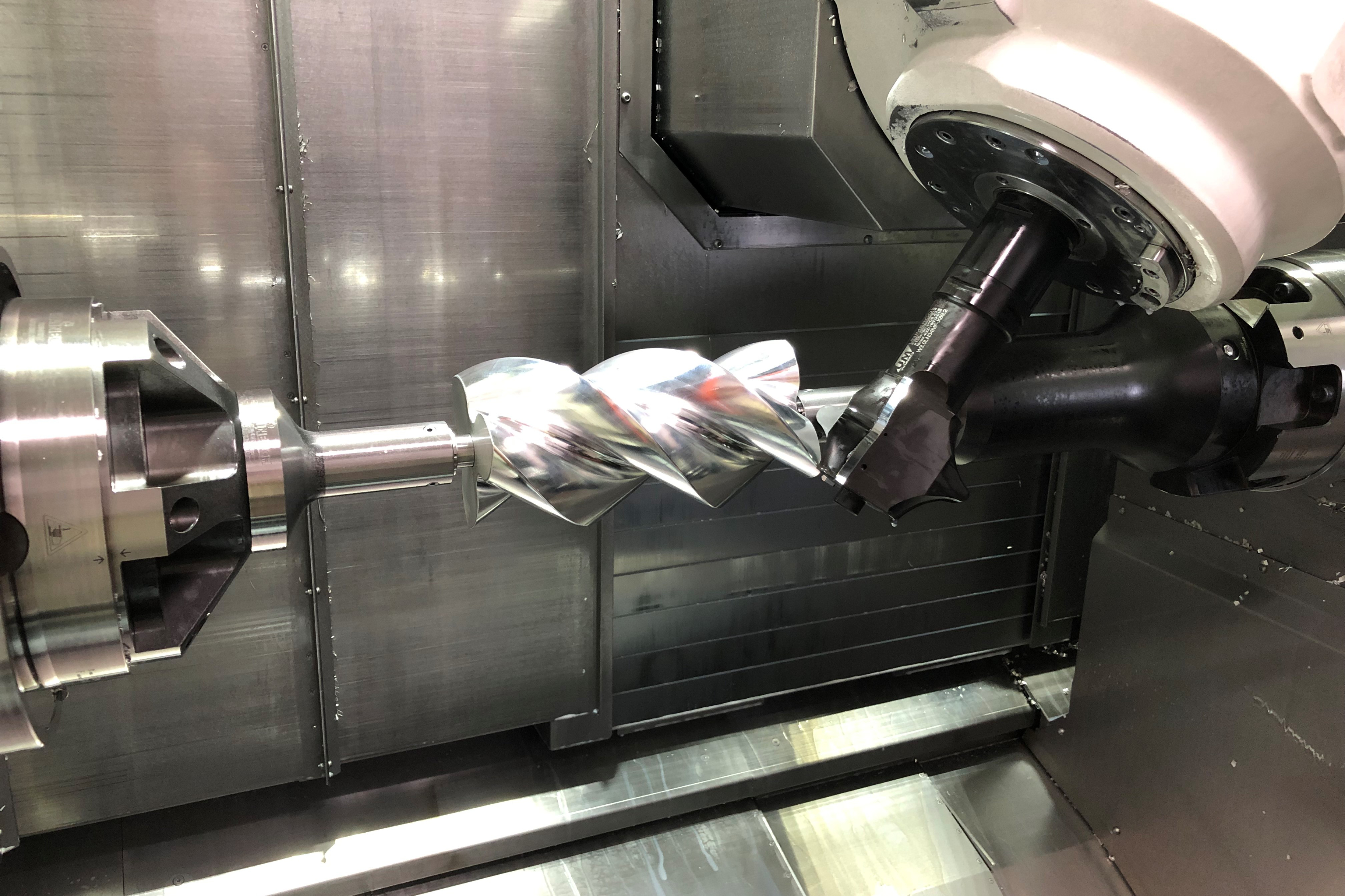PMPA's Blueprint For The Future
It's been more than 10 years since PMPA conducted a member needs study. PMPA's president, Dave Knuepfer, and new executive vice-president, Tim Andrassy, agreed that conducting the study now was especially important, because it would add additional member input to the new Strategic Plan and help PMPA focus its resources on those areas and services valued most.
It's been more than 10 years sincePMPAconducted a member needs study. PMPA's president, Dave Knuepfer, and new executive vice-president, Tim Andrassy, agreed that conducting the study now was especially important, because it would add additional member input to the new Strategic Plan and help PMPA focus its resources on those areas and services valued most.
Combined, the study results and Strategic Plan form a blueprint for the future. Mr. Knuepfer sees a close correlation between the Strategic Plan and the research results. "The Member Study also highlighted the need to improve the image of our industry," he says. "Doing that can help us with recruiting, motivating and retaining our best people; with marketing our industry and its products; and in promoting the needs and work of the PMPA Education Foundation."
Featured Content
Mr. Andrassy feels that targeting resources on the most critical issues is the best way to ensure members receive maximum value. "PMPA's job is not only to provide leadership for our industry, but exceptional value, as well," he says. "We want to provide the best possible return on our members' investment."
The primary goals of the study were to
- analyze the main reasons why members maintain their PMPA membership
- rank the value and importance of PMPA's services
- rate member satisfaction with PMPA and its services
- identify future trends or changes that need to be addressed by PMPA.
Campos Market Research, a nationally recognized research firm, designed and conducted the study. Board members approved the study in March. According to Campos, there was an excellent response rate from a cross section of active, associate and technical members.
The recent Member Future Needs Study and Strategic Plan are being combined to set the future direction for PMPA. They focus our attention on three key areas:
Global Competition.PMPA must assist its members so they can compete successfully against the highest levels of global competition.
- identifying new technology/equipment
- improving management knowledge/skills by providing leading edge information/education
- benchmarking against the best global practices
Workforce Issues.PMPA must continue to assist its members to attract, motivate and retain a world-class workforce.
- training/educating current and potential employees
- developing new methods of training
- helping to identify and teach new, leading edge skills - attracting high-quality, highly skilled new employees
Promoting our industry.PMPA must develop and implement a plan to:
- emphasize the role and importance of our industry in North America
- excite administrators, teachers and students about the career opportunities in our industry
- promote the skills of our people
- explain the vital role we play in keeping America's equipment, transportation, defense, food production, construction and other industries operating efficiently
- build pride within our industry
In the next issue of Production Machining we'll address some of the strategies the Strategic Planning Committee is developing to tackle these areas.
--------------------------------------------------------------------------------
The Study's Key Findings
这是一个总结的一些findin研究的关键gs. Complete reports will be distributed to all member companies.
Member Satisfaction Is High
- Ninety-eight percent of members rated their satisfaction with PMPA's benefits, services and programs as "very satisfied or satisfied." Only 2 percent were dissatisfied.
- Also indicating member satisfaction with PMPA's performance were the high scores received when asked if companies in the industry would benefit from belonging to PMPA. (Nearly 80 percent gave the Association a top rating of 8, 9 or 10.)
- When members were asked to judge PMPA's performance against the services members considered most valuable, the association's performance again was rated high — above the value of the service on every one of the top 15 areas.
[The survey also showed that PMPA's performance is exceptionally high on some services members don't consider important. The implication is that PMPA should focus more resources on higher priority areas.]
--------------------------------------------------------------------------------
PMPA's Most Important Member Services
When members were asked why they maintained their membership in the PMPA, these were the top reasons.
--------------------------------------------------------------------------------
Perceptions Of Our Industry
Members had mixed reactions when they were asked about the image of our industry.
Only 9.2 percent of PMPA members feel that the image of our industry has improved "greatly" over the past 5 years. A larger percent (46.8 percent) feel our image has improved "somewhat."
More than half of the respondents (56 percent) said that PMPA should allocate more effort to enhance the industry and recommended these actions:
1) encourage the interest of high school and technical school teachers, administrators and students
2) conduct a national marketing campaign
3) generate positive media attention
When members were asked to describe the image of the industry, more negative than positive words and phrases were used. Comments such as, "an old trade," "invisible outside the industry," "struggling," "suffering," "dirty," and "not respected," were cited frequently by members.
关键的观众我们必须达到一个积极的形象
1. customers
2. government
3. high school administrators/teachers
4. media
5. technical school administrators/teachers
6. high school students
[Note: When high school and technical school administrators/ teachers and high school students are combined, they become the most important audience by a wide margin.]
--------------------------------------------------------------------------------
Future Concerns And Trends
What key issues will impact our industry most in the next 3 to 5 years? Foreign competition was the most common answer.
Other key issues:
- foreign imports,
- pricing pressures, and
- lack of skilled labor.
Other trends and needs:
- education and training,
- technological development and support,
- ways to compete with other countries,
- cost reductions, and
- lobbying efforts.
--------------------------------------------------------------------------------
What Do the Results Mean?
Here's a summary of the survey's key implications.
1. Member satisfaction with PMPA was high, but by prioritizing services and focusing its resources, the association can provide an even better performance and more value for its members.
2. There are opportunities to provide services based on membership type.
- Active, technical and associate members name different reasons for retaining their memberships.
- Networking is impor- tant to all members, but the value of other services varies by membership type.
- Active and technical members tend to be more satisfied than associate members.
3. PMPA needs to develop strategies and programs to help its members compete in the global marketplace. These include education/ training; programs aimed at quality, competitiveness and cost reductions; and ways to recruit, motivate and retain both existing and highly qualified potential employees.
4. PMPA needs to develop and implement strategies to enhance the image of, and better promote, the industry. Key audiences include customers, high school and technical school administrators/teachers, high school and technical school students, the media and government officials.
When PMPA's Strategic Plan and the recent Member Future Needs Study are compared, they are a close fit. Combined they form our blueprint for the future.
















